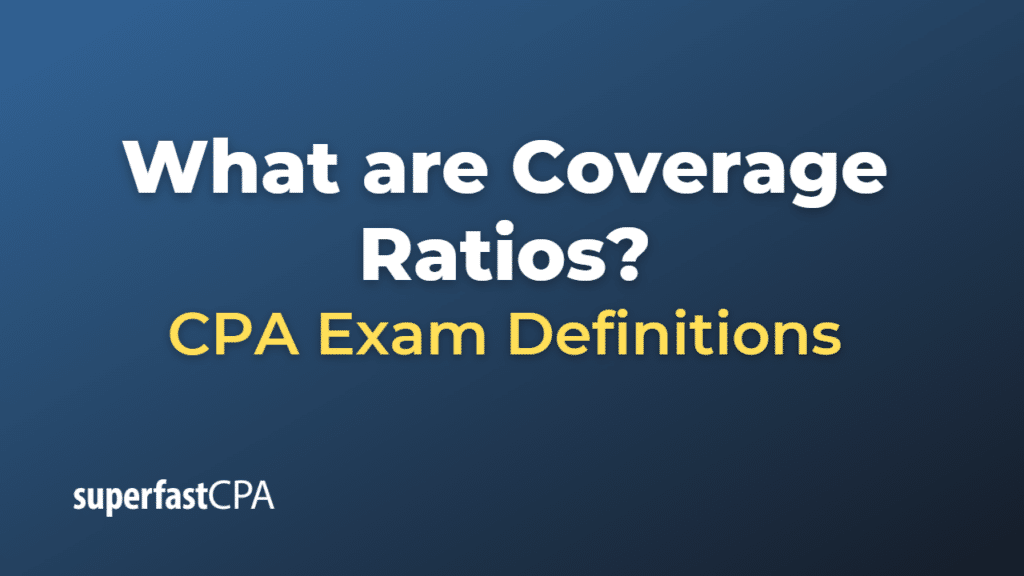Coverage Ratios
Coverage ratios are financial metrics used to measure a company’s ability to service its debt and meet its financial obligations. These ratios can provide insights into the financial health and stability of a company. Some of the commonly used coverage ratios include:
- Interest Coverage Ratio: This ratio measures a company’s ability to pay the interest on its outstanding debt. It is calculated as Earnings Before Interest and Taxes (EBIT) divided by the interest expense. A higher ratio suggests that the company is more capable of meeting its interest obligations.
- Debt Service Coverage Ratio (DSCR): This ratio is used to analyze a company’s ability to cover its debt obligations, including both principal and interest payments. It’s calculated as Net Operating Income divided by Total Debt Service. A DSCR of less than 1 indicates that the company doesn’t generate enough income to cover its debt payments.
- Asset Coverage Ratio: This ratio measures a company’s ability to cover its debt obligations with its assets. It’s calculated by subtracting current liabilities from total assets and then dividing by total debt. A higher ratio means the company has more assets relative to its debt, indicating a better ability to cover its debt obligations if necessary.
- Cash Coverage Ratio: This ratio measures a company’s ability to pay its interest expense with its cash flow. It’s calculated as (EBIT + depreciation) / interest expense. This ratio considers the company’s cash flow rather than its earnings, providing insight into the company’s liquidity and ability to cover interest expenses.
- Times Interest Earned Ratio (TIE): This ratio is similar to the interest coverage ratio and indicates how many times a company can cover its interest charges on a pretax basis.
Each of these ratios provides a different perspective on a company’s ability to meet its financial obligations, and they are often used together to provide a comprehensive view of a company’s financial health. Investors, lenders, and analysts often consider these ratios when evaluating a company’s creditworthiness and financial stability.
Example of Coverage Ratios
Let’s use an example to illustrate the Debt Service Coverage Ratio (DSCR), which is a common type of coverage ratio.
Suppose a company has the following financial figures for the year:
- Net Operating Income: $600,000
- Total Debt Service (Principal + Interest): $200,000
We can calculate the DSCR as follows:
\(\text{DSCR} = \frac{\text{Net Operating Income}}{\text{Total Debt Service}} \)
\(\text{DSCR} = \frac{\$600,000}{\$200,000} \)
\(\text{DSCR} = 3 \)
A DSCR of 3 means the company’s net operating income is three times greater than its total debt service obligations for the year. This indicates that the company has a strong ability to service its debt. In general, a DSCR of less than 1 would indicate that the company does not generate enough income to cover its debt obligations, whereas a higher DSCR indicates stronger financial health.
Please note that while this ratio can be useful, it should not be used in isolation to evaluate a company’s financial health. It is best to look at multiple financial ratios and indicators when assessing a company’s overall financial condition.













